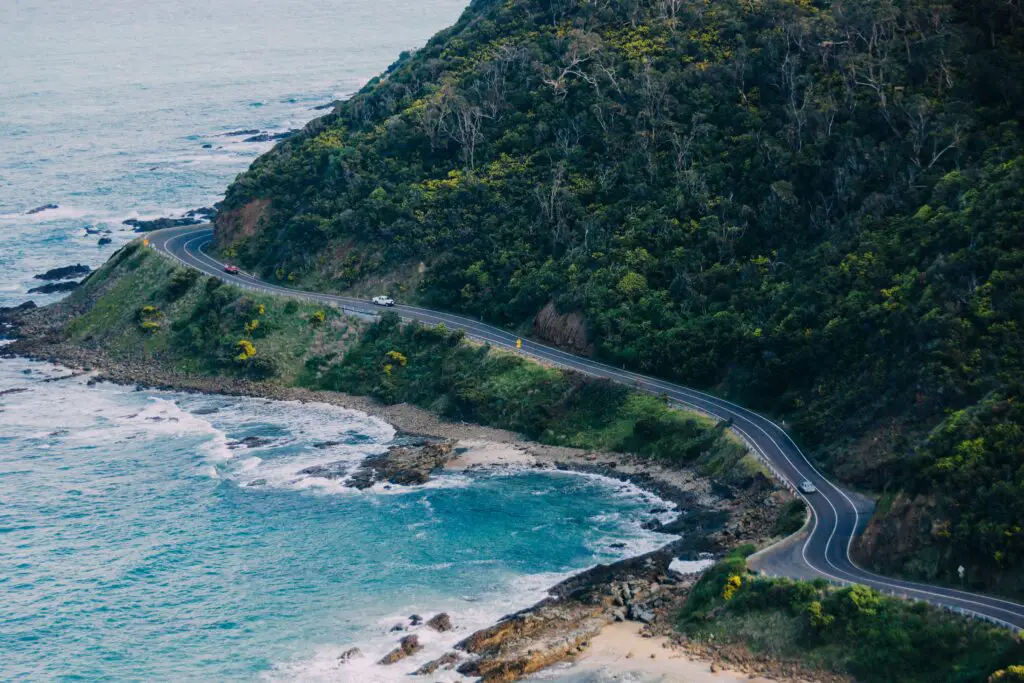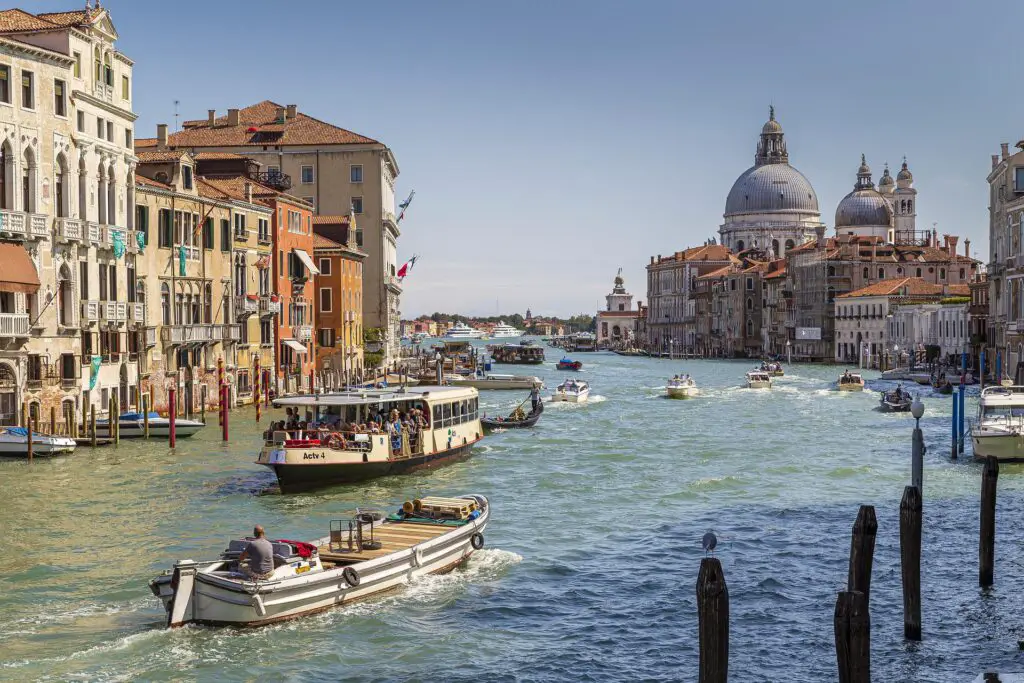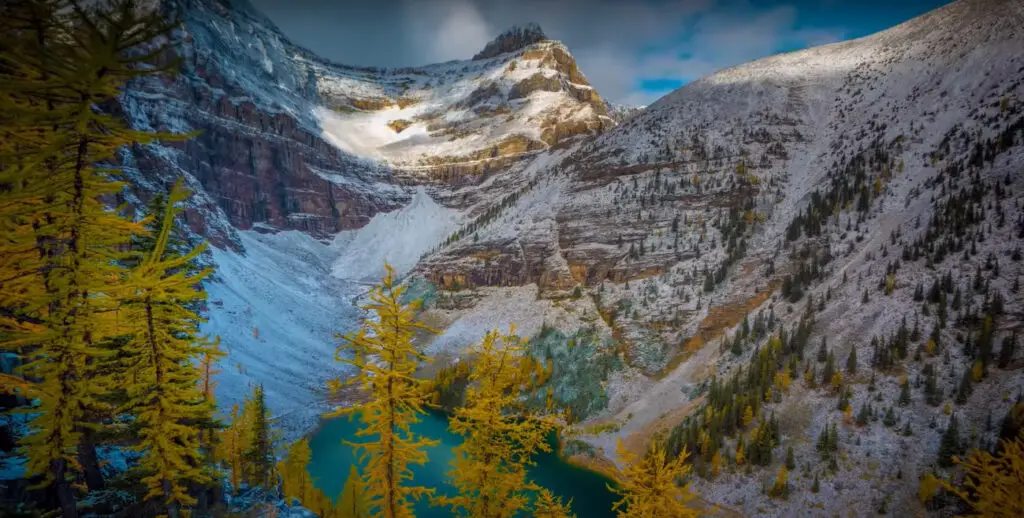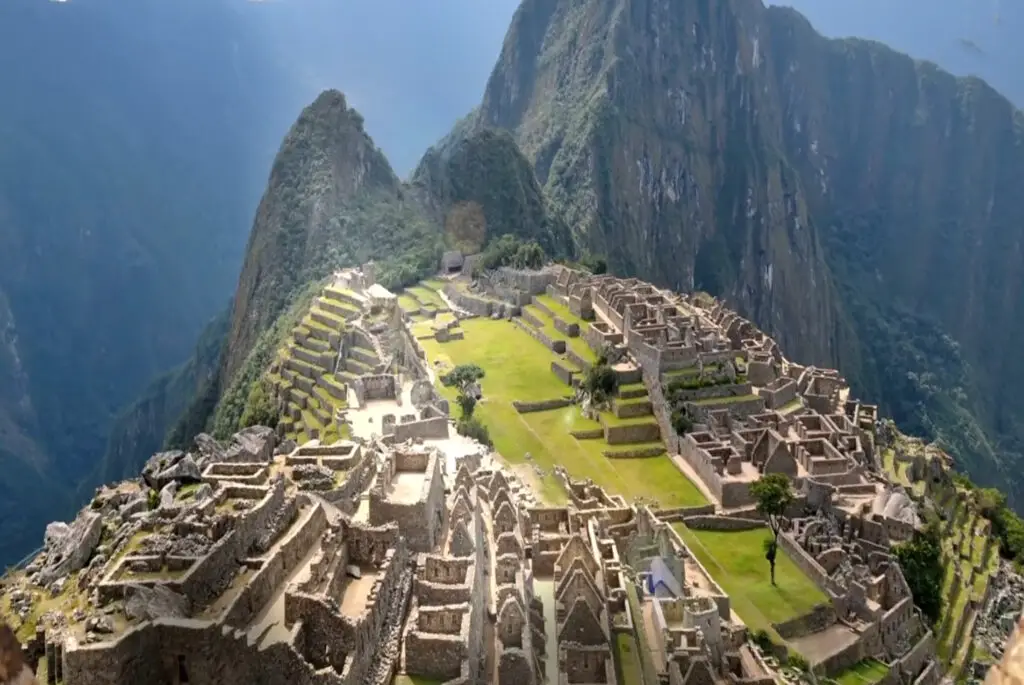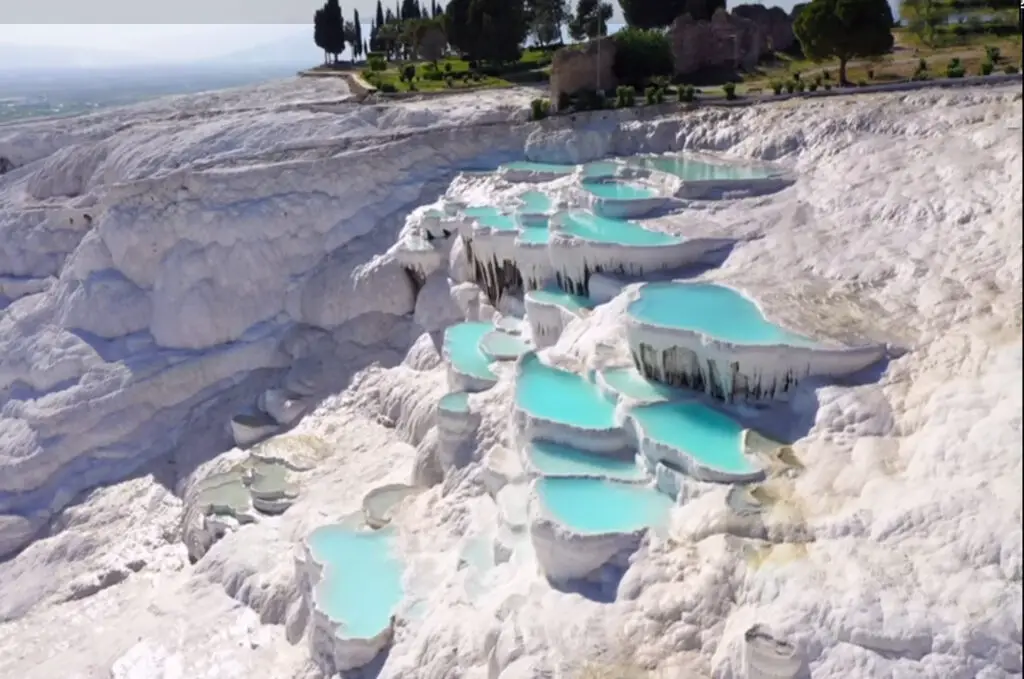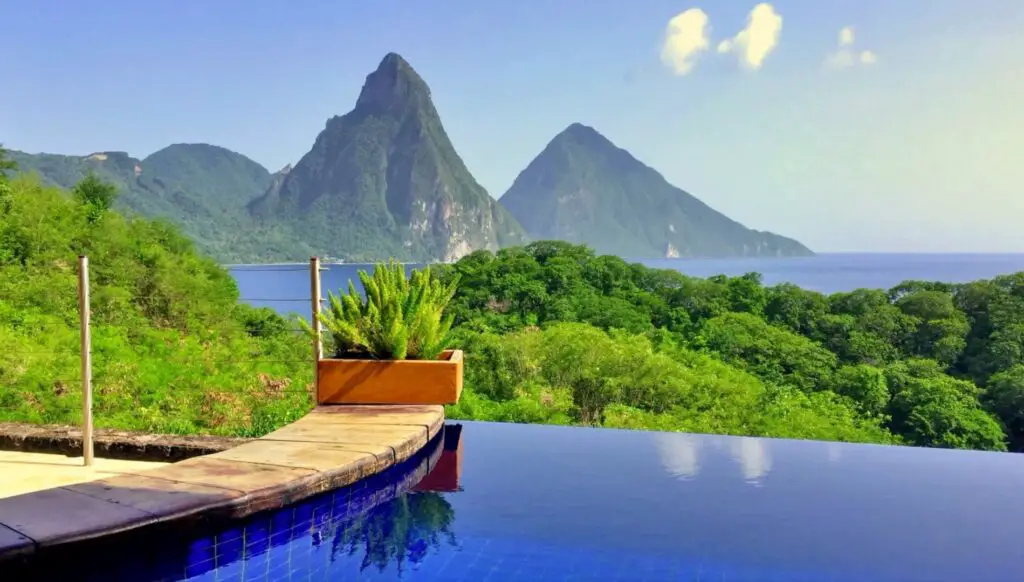The Grand Canyon, located in the northern region of Arizona in the United States, is one of the world’s most famous natural wonders. The Grand Canyon of Arizona, which stretches 277 miles long and up to 18 miles wide, is known for its awe-inspiring beauty, its stunning vistas, and its unique geologic history. In this article, we will explore how was the Grand Canyon formed in depth, including its formation, its history, and its significance to the United States and the world.
Visiting the Grand Canyon is an experience like no other. The awe-inspiring natural wonder is a must-see destination for anyone visiting the United States.
Where is The Grand Canyon Located?
The Grand Canyon is located in northern Arizona, and there are several ways to get there. If you are flying in, the nearest airport is in Flagstaff, which is about 80 miles from the park. Alternatively, you can fly into Phoenix, which is about 230 miles from the park.
If you are driving, there are several routes to take. The most direct route is to take Interstate 40 to Williams, Arizona, and then take Highway 64 north to the park. If you are coming from Las Vegas, you can take Highway 93 to Kingman, Arizona, and then take Highway 66 to the park.
How was The Grand Canyon Formed
The Grand Canyon is a massive and breathtaking natural wonder located in the state of Arizona, United States. It is a steep-sided gorge carved by the Colorado River over millions of years. The formation of the Grand Canyon is a result of several geological processes that have occurred over a vast span of time.
The story of the Grand Canyon begins around 70 million years ago when the region was covered by an inland sea. Over time, sedimentary layers consisting of sand, mud, and limestone accumulated at the bottom of the sea. As the land uplifted and the sea receded, the sedimentary layers were exposed to erosion.
The most significant factor in the formation of the Grand Canyon is the erosive power of the Colorado River. Approximately 6 million years ago, the Colorado River started cutting through the layers of sedimentary rock, slowly carving out the canyon. The river’s flow, combined with the force of water, rocks, and sediment, eroded the rock layers and deepened the canyon over time.
While the Colorado River played a crucial role, other geological forces also contributed to the formation of the Grand Canyon. One significant factor is the uplifting of the Colorado Plateau, the region where the canyon is located. Geological forces, such as tectonic activity and uplift of the land, raised the plateau, creating a steeper gradient for the river to flow and further accelerating the erosion process.
The rock layers exposed in the Grand Canyon are a testament to the immense timescale of its formation. The different layers, each with distinct colors and compositions, represent millions of years of geological history. The oldest exposed rocks in the canyon are estimated to be about 1.8 billion years old, while the youngest layers date back to around 230 million years ago.
Depth of The Grand Canyon
Today, the Grand Canyon stretches approximately 277 miles (446 kilometers) in length, reaches depths of over a mile (1.6 kilometers), and showcases a variety of geological formations and unique ecosystems. Its formation is a remarkable testament to the power of geological processes and the vastness of Earth’s history.
Pictures Gallery













Geological Formation of the Grand Canyon
The Grand Canyon is a geologic wonder that has fascinated scientists for many years. The canyon was formed over millions of years by the erosion of the Colorado River, which runs through the center of the canyon. The river began to carve out the canyon more than 5 million years ago, and it continues to do so to this day.
The rocks that make up the canyon are some of the oldest in the world, dating back more than 2 billion years. The rocks at the bottom of the canyon are the oldest, while the rocks at the top are the youngest. The different layers of rock in the canyon tell the story of the Earth’s geologic history, and they provide a glimpse into the past.
Grand Canyon Arizona History
The Grand Canyon has a rich history that dates back thousands of years. The first people to inhabit the canyon were Native American tribes, including the Hopi, Navajo, and Paiute. These tribes lived in the canyon for thousands of years, and they left behind a rich cultural legacy.
The first Europeans to see the canyon were Spanish explorers, who arrived in the area in the 16th century. However, it wasn’t until the 19th century that the canyon became known to the rest of the world. In 1869, John Wesley Powell led an expedition down the Colorado River and through the canyon, becoming the first person to explore the canyon’s interior.
In the years that followed, the Grand Canyon became a popular destination for tourists, and it was designated as a national park in 1919. Today, the park is visited by millions of people each year, who come to see the canyon’s natural beauty and learn about its history and geology.
Significance of Grand Canyon Arizona
The Grand Canyon is not only a beautiful natural wonder, but it also holds great significance to the United States and the world. The canyon is a symbol of the country’s natural heritage, and it has become a popular destination for tourists from around the world.
The canyon is also an important scientific resource, as it provides geologists and other scientists with a glimpse into the Earth’s geologic history. The different layers of rock in the canyon tell the story of the Earth’s formation and evolution, and they provide valuable insights into the processes that shaped the planet.
In addition, the canyon is an important cultural site for Native American tribes, who have lived in the area for thousands of years. The canyon is home to numerous ancient ruins and other cultural sites, and it provides a connection to the past for these tribes.
Visiting the Grand Canyon, Arizona
Visiting the Grand Canyon is an unforgettable experience. There are a variety of ways to explore the canyon, including hiking, rafting, and helicopter tours.
One of the most popular ways to explore the canyon is by hiking. There are a variety of hiking trails throughout the park, ranging from easy, short hikes to strenuous, multi-day backpacking trips. Some of the most popular trails include the Bright Angel Trail, the South Kaibab Trail, and the North Kaibab Trail.
Rafting is another popular way to explore the canyon. There are a variety of companies that offer guided rafting trips down the Colorado River, ranging from short day trips to multi-day adventures.
Hiking the Grand Canyon National Park
The Grand Canyon offers a wide range of hiking trails that cater to various skill levels and interests. Here are some popular trails within the Grand Canyon National Park:
South Kaibab Trail: This trail is known for its stunning views and steep descent into the canyon. It starts near Yaki Point on the South Rim and offers panoramic vistas along the way. It’s a challenging trail, and hikers are advised to be well-prepared with plenty of water and appropriate hiking gear.
Bright Angel Trail: Another popular trail on the South Rim, the Bright Angel Trail is more accessible and offers a variety of options for hikers. It descends to the Colorado River, and different destinations are available depending on the distance hikers wish to cover. The trail is well-maintained and offers water stations and shaded rest areas.
North Kaibab Trail: Located on the North Rim, this trail provides different hiking options, including day hikes and longer backpacking trips. It descends into the canyon and leads to the Bright Angel Campground near the Colorado River. The trail offers beautiful scenery and is considered more challenging than the South Rim trails due to its elevation gain.
Rim Trail: This trail follows the rim of the canyon on both the South Rim and the North Rim. It’s a relatively easy and mostly flat trail, suitable for casual walks or shorter hikes. The Rim Trail offers breathtaking panoramic views of the canyon and is accessible from various points along the rim.
Hermit Trail: Starting near Hermit’s Rest on the South Rim, this trail provides a more secluded hiking experience. It descends into the canyon, offering unique viewpoints and glimpses of the geological formations. The Hermit Trail is challenging and recommended for experienced hikers.
Grandview Trail: This trail begins near Grandview Point on the South Rim and offers panoramic views of the canyon. It descends steeply into the canyon and leads to Horseshoe Mesa, where hikers can explore ancient ruins. The Grandview Trail is considered strenuous and requires caution.
It’s important to note that hiking in the Grand Canyon can be physically demanding and requires adequate preparation. It’s recommended to check with the park authorities for trail conditions, obtain necessary permits if applicable, carry sufficient water and supplies, wear appropriate hiking gear, and be aware of safety guidelines to ensure a safe and enjoyable experience.
The Grand Canyon Skywalk
The Grand Canyon Skywalk is a popular tourist attraction located on the Hualapai Indian Reservation, which is situated on the western side of the Grand Canyon. This glass-bottomed walkway extends 70 feet over the canyon and provides a unique and exhilarating experience for visitors.
Construction and Design
The Grand Canyon Skywalk was designed by architect Mark Johnson of MRJ Architects and was constructed by Las Vegas-based company Lochsa Engineering. The walkway consists of a horseshoe-shaped steel frame that is anchored into the canyon walls. The walkway is made of four layers of glass, each of which is 2 1/2 inches thick, and can support the weight of 71 fully loaded 747 airplanes.
The Skywalk is designed to withstand extreme weather conditions, including high winds and earthquakes. In fact, the Skywalk was tested with simulated wind speeds of up to 100 miles per hour during its construction and was found to be safe and stable.
Visiting the Skywalk
To visit the Grand Canyon Skywalk, visitors must purchase a ticket from the Hualapai Indian Tribe, which owns and operates the attraction. The ticket includes access to the Skywalk, as well as a shuttle ride to the site.
Once at the site, visitors are required to wear shoe covers to protect the glass. Cameras, cell phones, and other personal items are not allowed on the walkway, but visitors can store their items in lockers provided at the site.
Visitors are allowed to spend up to 20 minutes on the Skywalk, and there is a photographer on hand to take photos for an additional fee. The Skywalk is open year-round, and the hours of operation vary depending on the season.
Controversy
The Grand Canyon Skywalk has been the subject of controversy since its opening in 2007. Some members of the Hualapai Tribe, which owns and operates the attraction, have criticized the Skywalk as a “Disneyfication” of their sacred land.
Environmentalists have also criticized the Skywalk for its impact on the natural landscape. The walkway was constructed without an environmental impact statement, and some have raised concerns about the potential for erosion and other environmental damage.
Despite these concerns, the Grand Canyon Skywalk remains a popular attraction for visitors to the Grand Canyon. The Skywalk offers a unique and thrilling perspective on one of the world’s most breathtaking natural wonders, and for many visitors, it is a highlight of their trip to the Grand Canyon.
Grand Canyon National Park Entrance Fees
There is a fee to enter the Grand Canyon National Park. The fee is $35 per vehicle, or $20 per person if you are entering on foot, bicycle, or motorcycle (Please check the latest rates). The fee is valid for seven days, so if you are planning to stay longer than that, you will need to purchase a new pass.
Things to do at the Grand Canyon Arizona
The Grand Canyon offers a variety of activities and attractions for visitors. Here are some of the most popular things to see and do:
Grand Canyon Village: This historic village is located on the South Rim of the park and offers a variety of dining and shopping options. It is also the starting point for several popular hikes.
Hiking: There are a variety of hiking trails throughout the park, ranging from easy, short hikes to strenuous, multi-day backpacking trips. Some of the most popular trails include the Bright Angel Trail, the South Kaibab Trail, and the North Kaibab Trail.
Mather Point: This viewpoint on the South Rim provides stunning views of the canyon and is one of the most popular spots for photos.
Desert View Watchtower: This historic tower on the South Rim provides panoramic views of the canyon and is a great spot for photos.
Colorado River Rafting: There are a variety of companies that offer guided rafting trips down the Colorado River, ranging from short day trips to multi-day adventures.
Helicopter Tours: There are several companies that offer helicopter tours of the Grand Canyon, which provide a unique perspective on the canyon.
Grand Canyon Skywalk: This glass-bottomed walkway extends 70 feet over the canyon and provides stunning views. It is located on the Hualapai Indian Reservation, which is located on the western side of the canyon.
Hotels near the Grand Canyon
There are several options for lodging in and around the Grand Canyon. The most popular option is to stay in the park, either at one of the lodges or at one of the campgrounds. The lodges offer a variety of accommodations, ranging from basic rooms to suites. The campgrounds offer both tent and RV camping.
If you prefer to stay outside of the park, there are several options in nearby towns such as Williams, Flagstaff, and Sedona. These towns offer a variety of lodging options, including hotels, motels, and vacation rentals.
Best Time to Visit the Grand Canyon Arizona
The best time to visit the Grand Canyon depends on your preferences. The summer months (June through August) are the busiest, and the park can get crowded. However, the weather is warm and sunny, and all of the park’s facilities are open.
The spring and fall are also popular times to visit. The weather is mild, and the crowds are smaller. The winter months (December through February) are the least crowded, but the weather can be unpredictable, and some of the park’s facilities may be closed.

